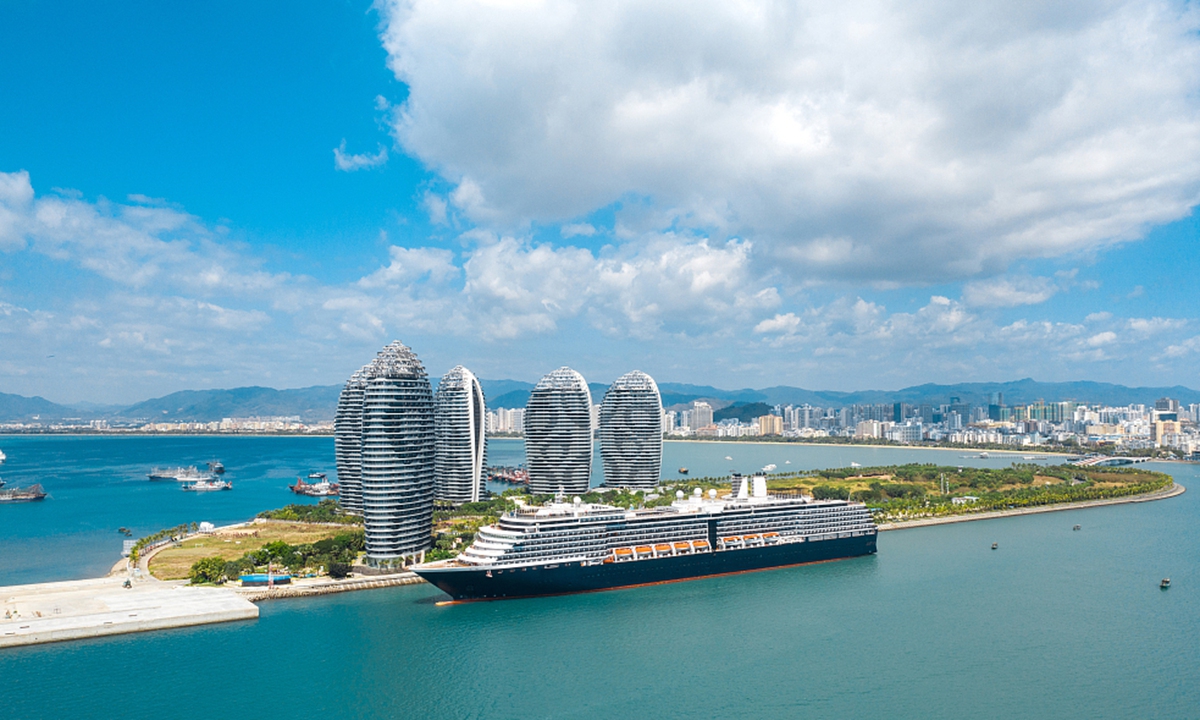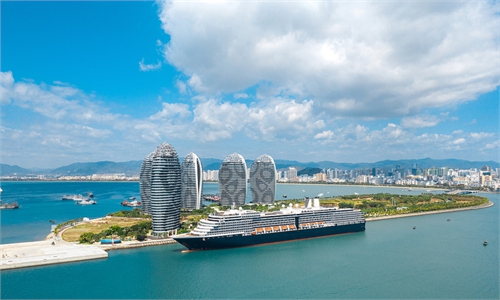Chinese coastal cities issue warnings of imported COVID-19 cases to fishermen in wake of flare-ups in Hainan

Sanya Photo: VCG
Multiple coastal Chinese cities have issued warnings of imported COVID-19 cases as the fishing season is approaching while the domestic and overseas epidemic prevention and control remains complex and grim.
The local epidemic prevention and control authorities and the oceans and fisheries authorities in those coastal areas including East China's Fujian Province, Linhai city in East China's Zhejiang Province and Raoping county in South China's Guangdong Province all have issued over the past week similar warnings against the increased risk of imported cases at sea as the summer fishing moratorium is coming to an end and the annual peak fishing and fishery production season is approaching.
The oceans and fisheries authorities in Fujian reminded in particular that the ships set off to the sea should avoid going to high-risk areas and sea regions and avoid contact with personnel from overseas and ships with uncertain origins. If due to specific reasons contact is required with such personnel and ships, it must be reported ahead of their entry to the ports.
The warnings came after a sudden Omicron outbreak that originated in Sanya, South China's Hainan Province. The variant is believed to have been imported from overseas through fishery trading at sea and has led to accumulated 1,507 infections including 1,042 confirmed cases and 465 silent carriers across at least 13 cities and counties in the province as of Monday afternoon.
The Omicron BA5.1.3 mutated variant identified as the origin of the latest outbreak in Sanya was believed to be imported through fishery trading with overseas fishermen. Despite the fact that it was reported domestically for the first time recently, it has quickly risen to be the main epidemic strain in overseas countries and regions, local authorities said on Thursday.
The current epidemiological investigation shows that most of the infections are related to fishing ports, fishing boats, fishermen and fishing markets, and the transmission chain extended radially from the central fishing port of Yazhou district, with the number of infections increasing continuously and the epidemic is on a rapid rise due to the variant's hidden and strong transmission characteristics.
Sanya reported 23 confirmed cases and 11 silent carriers at Monday noon, bringing the total confirmed cases to 824 and the total asymptomatic infections to 419 as of Monday noon since August 1.
In spite of the complex epidemic situation in Sanya as was said by the local authorities, Yang Zhanqiu, deputy director of the pathogen biology department at Wuhan University, believes it is not necessary to stop the normal fishing trades as long as the epidemic prevention measures are strictly implemented, as risks of imported cases have existed since the beginning of the COVID-19 epidemic in 2020.
The Hainan Coast Guard has since strengthened its maritime patrol and law enforcement and directed the local fishermen to strictly implement the relevant requirements for epidemic prevention and control.
Apart from the outbreak in Sanya, the epidemic prevention and control authorities in the coastal city Linhai also warned of the sudden flare-up of cluster infections in China's trading hub and the world's largest small commodity market Yiwu in Jinhua city, Zhejiang, which was reportedly caused by the Omicron BA.5.2 variant. Spillover cases from Yiwu has been reported in surrounding Zhejiang cities including Shaoxing, Lishui and Wenzhou, which has posed complex and grim epidemic prevention situation to the area.


